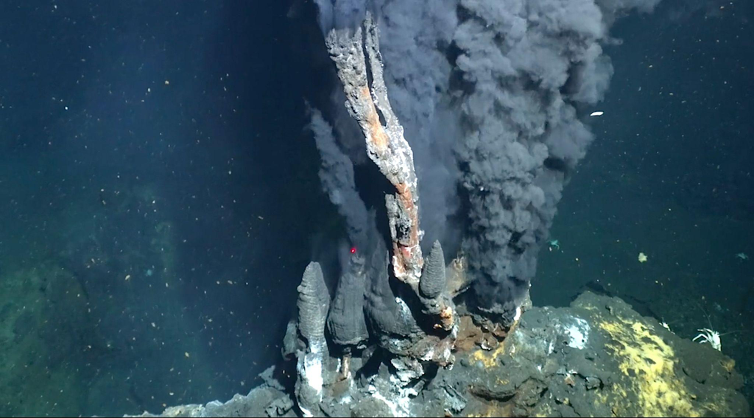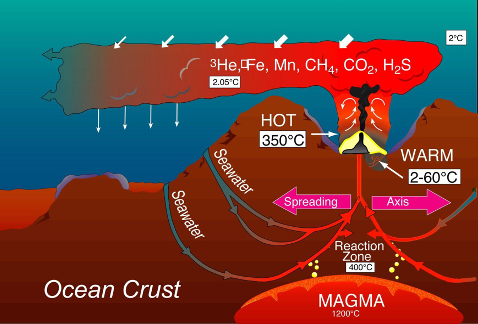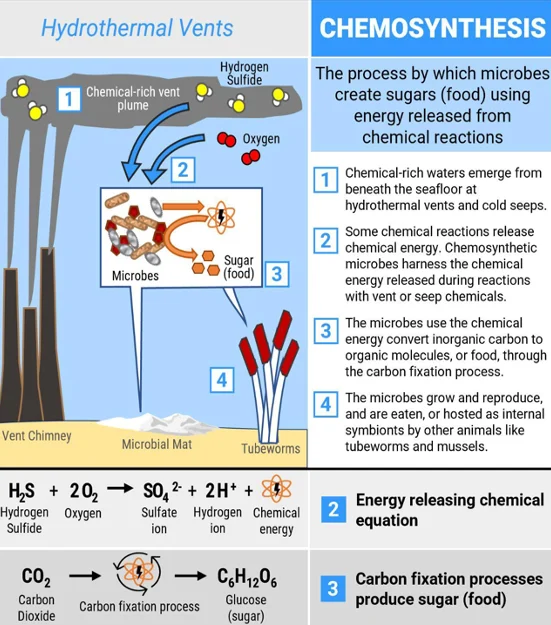We are investigating the relationship and possible communication between microbial communities that form the basis of hydrothermal vent ecosystems and the invertebrate larvae that settle and grow in these locations.

The importance of Hydrothermal Vents:
Deep-sea hydrothermal vents occur on the ocean floor along mid-oceanic ridge systems where tectonic plates diverge and cold ocean water is heated by hot magma deep beneath the ocean’s crust and released as hydrothermal fluids through cracks on the seafloor. As hot hydrothermal fluids at temperatures up to 700° Fahrenheit are released into the cold deep ocean water column, chemicals precipitate out of solution and form spires called black smokers, or underwater volcanoes. Hydrothermal vent fluid released through these black smokers provide the planet’s global ocean circulation system with critically important minerals needed by the entire marine food web.
Prior to the discovery of hydrothermal vents less than 50 years ago, the bottom of the ocean was believed to be much like a desert, were highly diverse butpoor biological communities made a living scavenging the limited biological resources that sink down from the ocean’s sunlit surface.

Credit: National Oceanic and Atmospheric Administration
But in 1977, the science community’s understanding of life in the deep-sea radically changed. This is when the first of many complex deep-sea ecosystems thriving at hydrothermal vents were discovered. Here, life thrives in seemingly hostile environments because microorganisms found in around hydrothermal vents can harvest energy from chemicals of volcanic origin and convert carbon dioxide into organic molecules in the absence of light. Through this process, called chemosynthesis microbes, the most abundant organisms on our planet, are able to provide food and the foundation of deep-sea vent ecosystem.

Credit: National Oceanic and Atmospheric Administration
Our Science Team’s Specific Research Question
We are exploring the relationships and communication between foundational organisms that form biological communities at hydrothermal vents along a section of the global mid-oceanic ridge system located in the eastern Pacific ocean, known as the East Pacific Rise. Specifically, we are investigating how invertebrate larvae find the chemosynthetic microbial biofilms that they must settle on to survive

We hypothesize that the microbes communicate with the larvae via chemical cues facilitating their settlement at vent sites. Larvae depend upon the microbes in the deep-sea to settle and develop into adult communities. This is because microbes are able to use chemosynthesis to convert carbon dioxide into organic compounds that the invertebrates then feed upon. What we do not know is the nature of the chemical cues exchanged between the microbes and the larvae that induce larval settlement onto patches of microbial biofilms at the bottom of the ocean.
